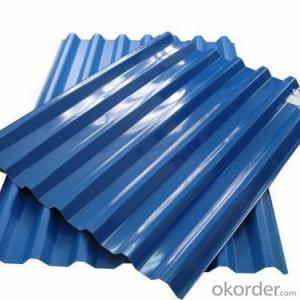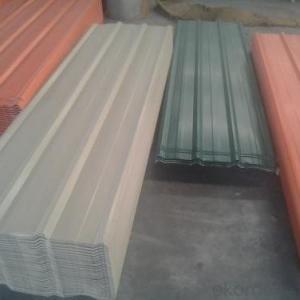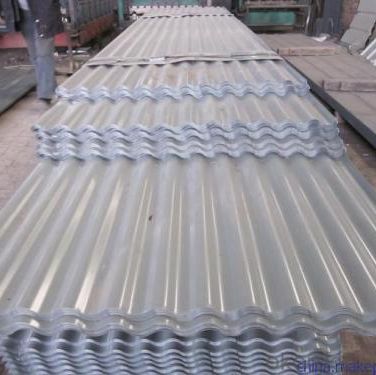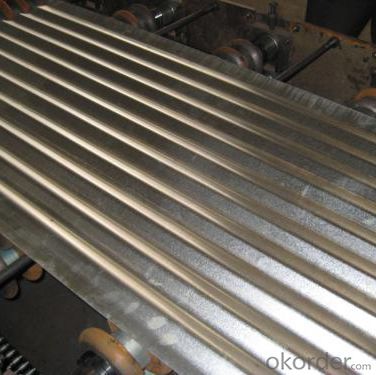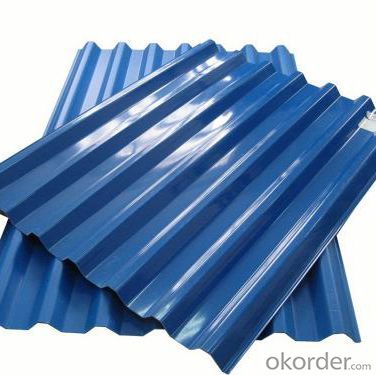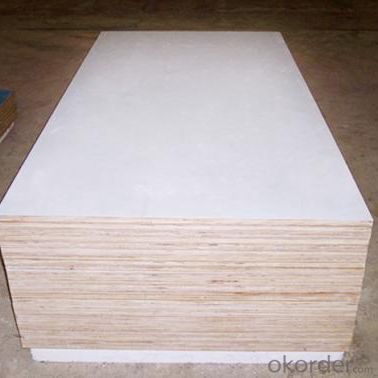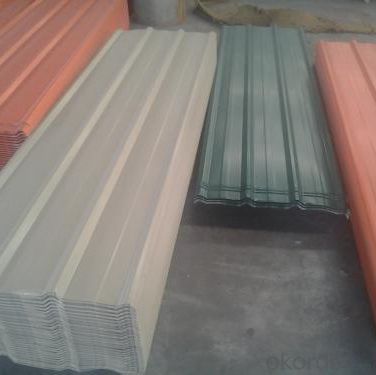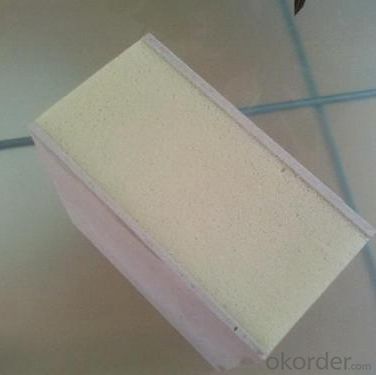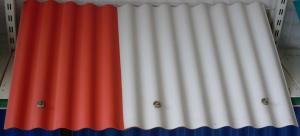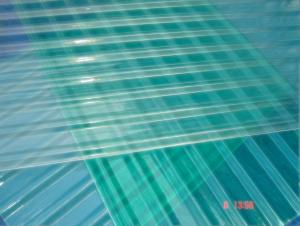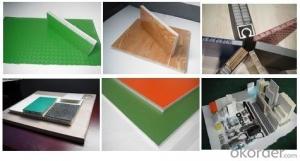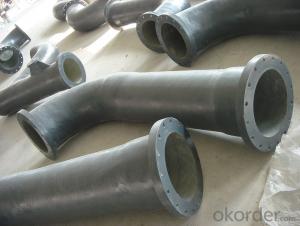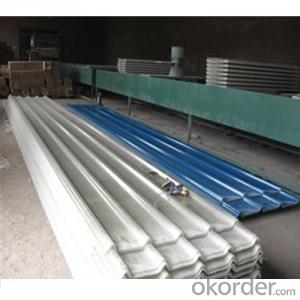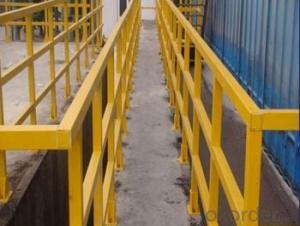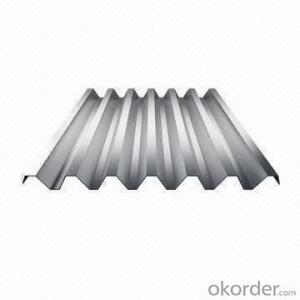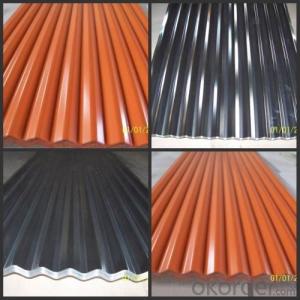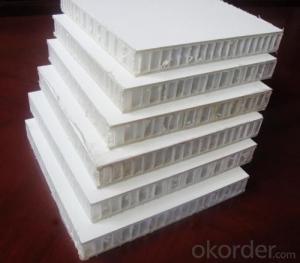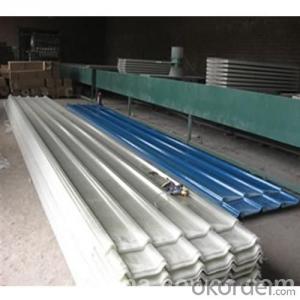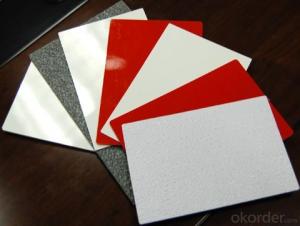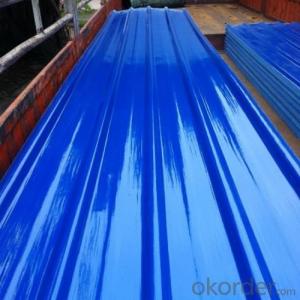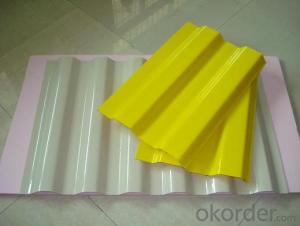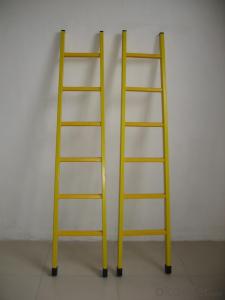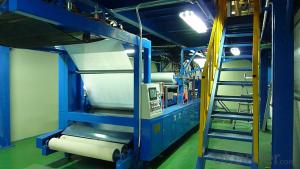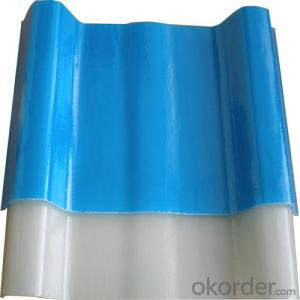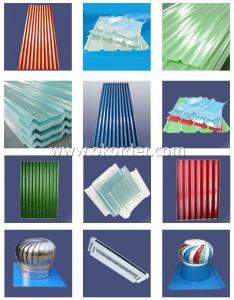FRP Roofing Panel - Fiberglass Reinforced Plastic (FRP) Panel
- Loading Port:
- Tianjin
- Payment Terms:
- TT OR LC
- Min Order Qty:
- 500 m
- Supply Capability:
- 60000 m/month
OKorder Service Pledge
OKorder Financial Service
You Might Also Like
Specification
PRODUCT DESCRIPTION
Fiberglass/ Fiberglass Reinforced Plastic (FRP) or Glass Fiber Reinforced Plastic (GRP) is composed of thermosetting plastics and reinforced fiberglass, Greater than that of steel products and aluminum products in specific tenacity.
Products in the ultralow temperature or high temperature will not happen brittle fracture, deformation and to prevent heat transfer. Corrosion products in the environment anti-aging, yellowing resistance, corrosion resistance, friction resistance, easy to clean.Can be instead of aluminum, stainless steel plates, tiles and so on.
FEATURES
1). Light Transmission: The light transmission of FRP roof sheet is between 3%-85%. Light through FRP corrugated sheet scatters and is mild. It will not form a light so as to make the indoor brighter.
2). Weather resistant: The UV agent mixing in the corrugated sheet, which can truly resist the damage of ultraviolet ray, which can truly resist the damage of ultraviolet ray.
3). Flame retardant: B1 grade.
4). Anti-corrosion: It resists chemical corrosion and its life span is over 3 times longer than zinc panel.
5). Water proof:100% water proof.
6). Impact capacity: resist impact, tensile and hardly breakable.
7). Light weight: the weight is light, etc
SPECIFICATIONS
| Name: | Fibreglass Reinforced Polyester(FRP ) Sheet |
| Material: | Protective film, Unsaturated resin polyester, Fiberglass |
| Weight: | 1800g/2400g/2750g/3050g Square meter |
| Thickness: | 0.8~3.0mm |
| Length: | Customized |
| Temp: | used in -40°c to 140 °c |
| OEM: | Welcomed |
| Color: | Clear/Blue |
PICTURES
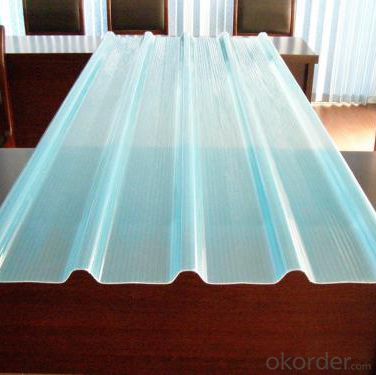

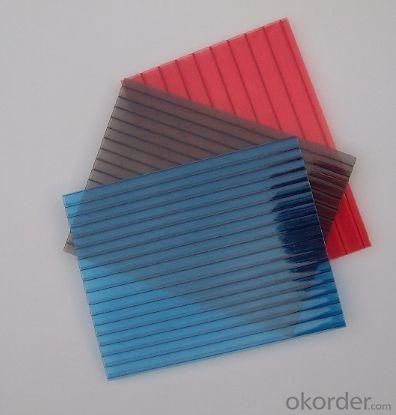
- Q: Can FRP roofing panels be used for covered walkways?
- Yes, FRP roofing panels can be used for covered walkways. FRP (Fiberglass Reinforced Plastic) roofing panels have several properties that make them suitable for this application. Firstly, FRP panels are lightweight, which makes them easy to install and maintain. Additionally, they are highly durable and resistant to corrosion, UV rays, and other environmental factors. This ensures that the panels will withstand the test of time and provide long-lasting protection for the covered walkways. Furthermore, FRP panels are available in various colors and designs, allowing for customization to match the aesthetic requirements of the walkway. Overall, FRP roofing panels are a reliable and cost-effective option for constructing covered walkways.
- Q: Are FRP roofing panels resistant to extreme temperatures?
- Yes, FRP (Fiberglass Reinforced Plastic) roofing panels are generally resistant to extreme temperatures. They have excellent thermal stability and can withstand both high and low temperatures without warping, cracking, or losing their structural integrity.
- Q: Can FRP roofing panels be used for skylights?
- FRP roofing panels, known as Fiberglass Reinforced Plastic, are capable of being utilized as skylights. These panels possess the qualities of being lightweight and durable, while also providing exceptional light transmission. Consequently, they have become a popular choice for skylight applications. Their design encompasses weather resistance, UV stability, and the ability to withstand extreme temperatures, rendering them suitable for outdoor use. Furthermore, these FRP panels come in various colors and profiles, granting the opportunity for customization and seamless integration with the surrounding roofing system. Nevertheless, it is imperative to ascertain that the FRP panels employed for skylights are specifically designed and certified for this purpose. They may include additional features such as enhanced impact resistance or light diffusion properties, which optimize their performance as skylights.
- Q: Do FRP roofing panels require frequent maintenance?
- No, FRP roofing panels do not require frequent maintenance. They are highly durable and resistant to damage, which reduces the need for regular maintenance. However, occasional cleaning and inspection to remove debris or check for any potential issues is recommended to ensure their longevity and optimal performance.
- Q: Can FRP roofing panels be used in industrial applications?
- Yes, FRP roofing panels can be used in industrial applications. FRP (Fiberglass Reinforced Plastic) roofing panels are known for their durability, strength, and resistance to corrosion, making them suitable for industrial settings. They are commonly used in factories, warehouses, and other industrial facilities due to their ability to withstand harsh environments, heavy loads, and extreme weather conditions. Additionally, FRP roofing panels are lightweight, easy to install, and require minimal maintenance, making them a cost-effective choice for industrial applications.
- Q: Are FRP roofing panels prone to warping from heavy machinery?
- Yes, FRP roofing panels are prone to warping from heavy machinery. The weight and vibrations produced by heavy machinery can put significant stress on the panels, causing them to warp over time. It is important to consider the load-bearing capacity and installation guidelines of FRP roofing panels to minimize the risk of warping in such scenarios.
- Q: Can FRP roofing panels be used in schools or educational institutions?
- Yes, FRP roofing panels can be used in schools or educational institutions. FRP (Fiber Reinforced Plastic) roofing panels are lightweight, durable, and resistant to corrosion, making them suitable for various applications, including educational buildings. They offer excellent weather protection, insulation, and can be easily installed or replaced, making them a cost-effective choice for schools. Additionally, FRP panels are available in various colors and designs, allowing for customization to match the aesthetic requirements of educational institutions.
- Q: Can FRP roofing panels be used for exterior cladding?
- Yes, FRP (Fiberglass Reinforced Plastic) roofing panels can be used for exterior cladding. FRP panels are known for their durability, lightweight nature, and resistance to corrosion, making them suitable for various applications including cladding. They can provide a protective and aesthetically pleasing layer to the exterior of a building. Additionally, FRP panels are available in a range of colors, finishes, and textures, allowing for customization and design flexibility. However, it is important to ensure that the specific FRP roofing panels chosen meet the necessary requirements for exterior cladding and meet local building codes and regulations. Consulting with a professional or manufacturer is recommended to ensure proper installation and compatibility with the intended application.
- Q: Are FRP roofing panels suitable for historical restoration projects?
- FRP roofing panels may not be the most suitable choice for historical restoration projects as they do not typically match the aesthetic and architectural characteristics of historic buildings. Traditional roofing materials such as slate, clay tiles, or wood are often preferred to maintain the historical integrity and authenticity of the structure.
- Q: Are FRP roofing panels resistant to impact from falling debris?
- Yes, FRP (Fiberglass Reinforced Plastic) roofing panels are generally resistant to impact from falling debris. FRP panels are known for their durability and strength, making them capable of withstanding various types of impact, including falling debris. The composition of FRP panels, which includes a layer of fiberglass reinforced with plastic, provides them with high tensile strength and impact resistance. Additionally, FRP panels are often designed to meet industry standards and regulations, ensuring their ability to withstand impact and protect the underlying structure. However, the specific resistance to impact may vary depending on the thickness and quality of the FRP panels used. It is always recommended to consult with manufacturers or experts to determine the most suitable FRP panel option for specific applications and potential falling debris concerns.
Send your message to us
FRP Roofing Panel - Fiberglass Reinforced Plastic (FRP) Panel
- Loading Port:
- Tianjin
- Payment Terms:
- TT OR LC
- Min Order Qty:
- 500 m
- Supply Capability:
- 60000 m/month
OKorder Service Pledge
OKorder Financial Service
Similar products
Hot products
Hot Searches
Related keywords


